The figure shows four arrangement of three particles of equal masses. Rank the arrangement according to the magnitude of the net gravitational force on the particle m, greatest first.
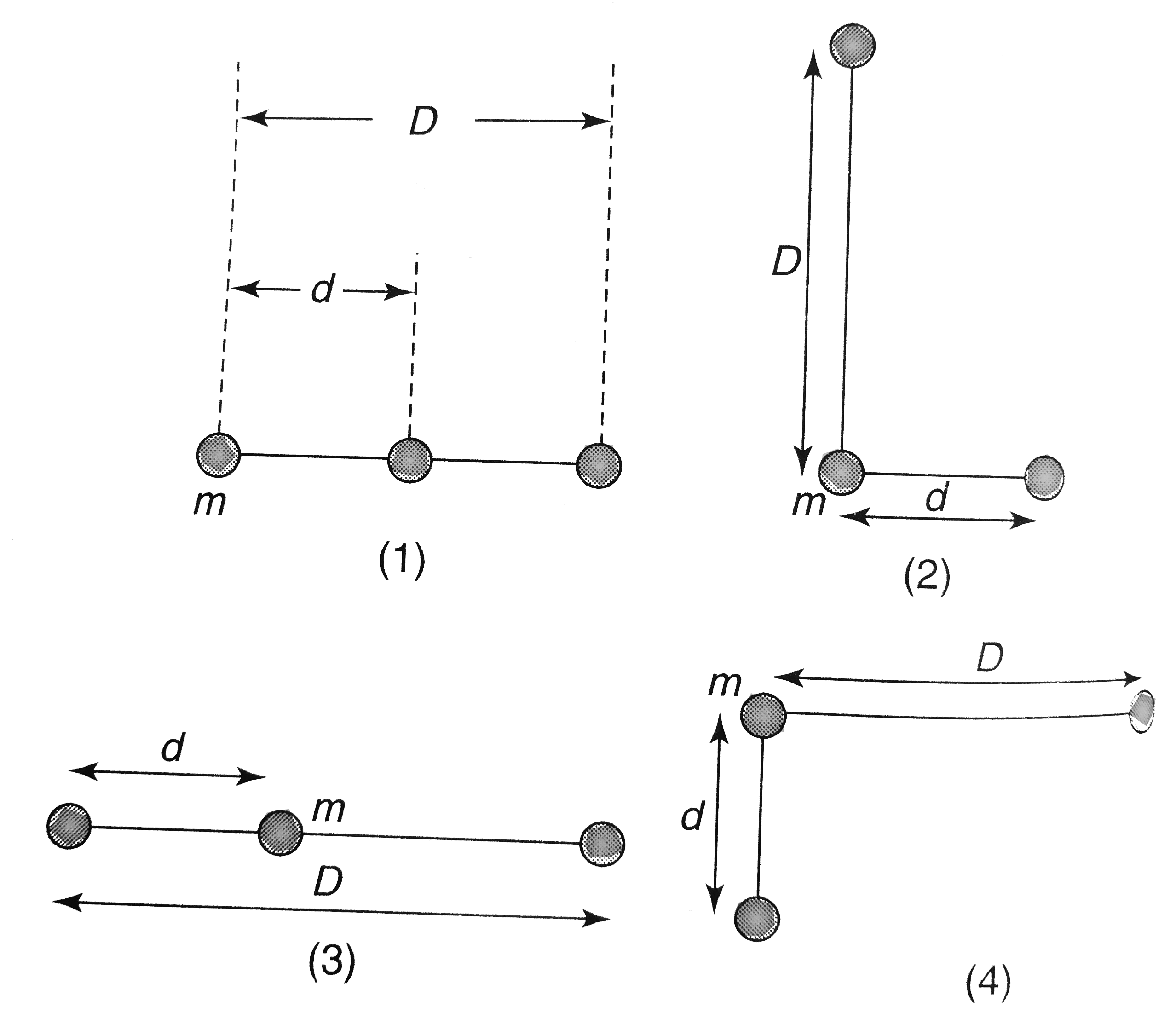
1, tie of 2 and 4, then 3
1,4,3,2
2,3,4,1
4,3,1,2
The correct Answer is:A
In arrangement 1, both forces act in the same direction. In arrangement 3, both forces act in opposite direction. This alone decides in favour of option (a),
Topper's Solved these Questions
- GRAVITATIONBOOK - A2ZCHAPTER - GRAVITATIONEXERCISE - Gravitational Field And Acceleration Due To Gravity
34 Videos
- GRAVITATIONBOOK - A2ZCHAPTER - GRAVITATIONEXERCISE - Gravitational Potential, Energyand Escape Velocity
32 Videos
- GENERAL KINEMATICS AND MOTION IN ONE DIMENSIONBOOK - A2ZCHAPTER - GENERAL KINEMATICS AND MOTION IN ONE DIMENSIONEXERCISE - Chapter Test
30 Videos
- KINETIC THEORY OF GASES AND THERMODYNAMICSBOOK - A2ZCHAPTER - KINETIC THEORY OF GASES AND THERMODYNAMICSEXERCISE - Chapter Test
29 Videos
Similar Questions
A particle is to be placed, in turn, outside four objects each of mass m:(1) a large uniform solid sphere, (2) a large uniform spherical shell,(3) a small uniform solid sphere, and (4) a small uniform shell. In each situation,the distance between the particle and the center of the object is d. Rank the objects according tothe magnitude of the gravitational force they exert on the particle, greatest first.
View SolutionThe figure here shows three arrangements of an electron e and two protons p. (a) Rank the arrangement according to the magnitude of the net electrostatic force on the electron due to the protons, largest first. (b) In situation c, is the angle between the net force on the electron and the line labelled d less than or more than 45∘ ?
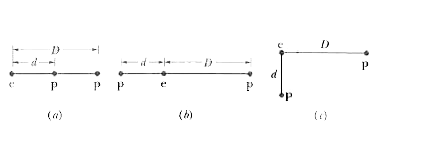
View Solution
Knowledge Check
The figure shows four arrangements of three particles of equal masses. (a) Rank the arrangements accroding to the magnitude of the net gravitational force on the particlelabeled m, greatest first. (b) In arrangement 2, is the direaction of the net force closer of the line of length d or to theline of length D ?
A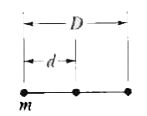 B
B C
C D
D
The figure shows four arrangements of three particles of equal masses. (D = 2d)

Select the correct option regarding the magnitude of the net gravitational force on the particle labelled m.A(i)>(iii)=(iv)>(ii)B(i)=(iii)>(ii)>(iv)C(i)>(ii)>(iii)>(iv)D(iv)<(iii)<(ii)=(i)A mass is at the centre of a square, with four masses at corners as shown
Rank the choice according to the magnitude of the gravitational force of the centre mass
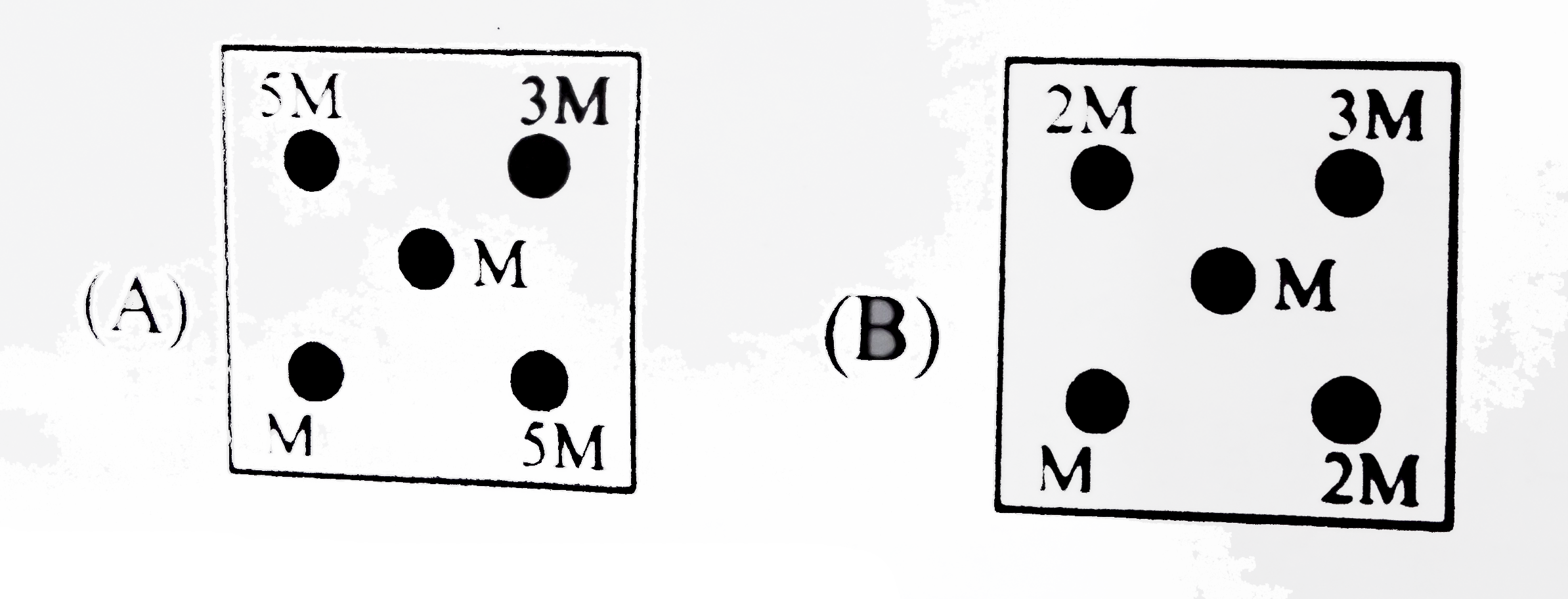
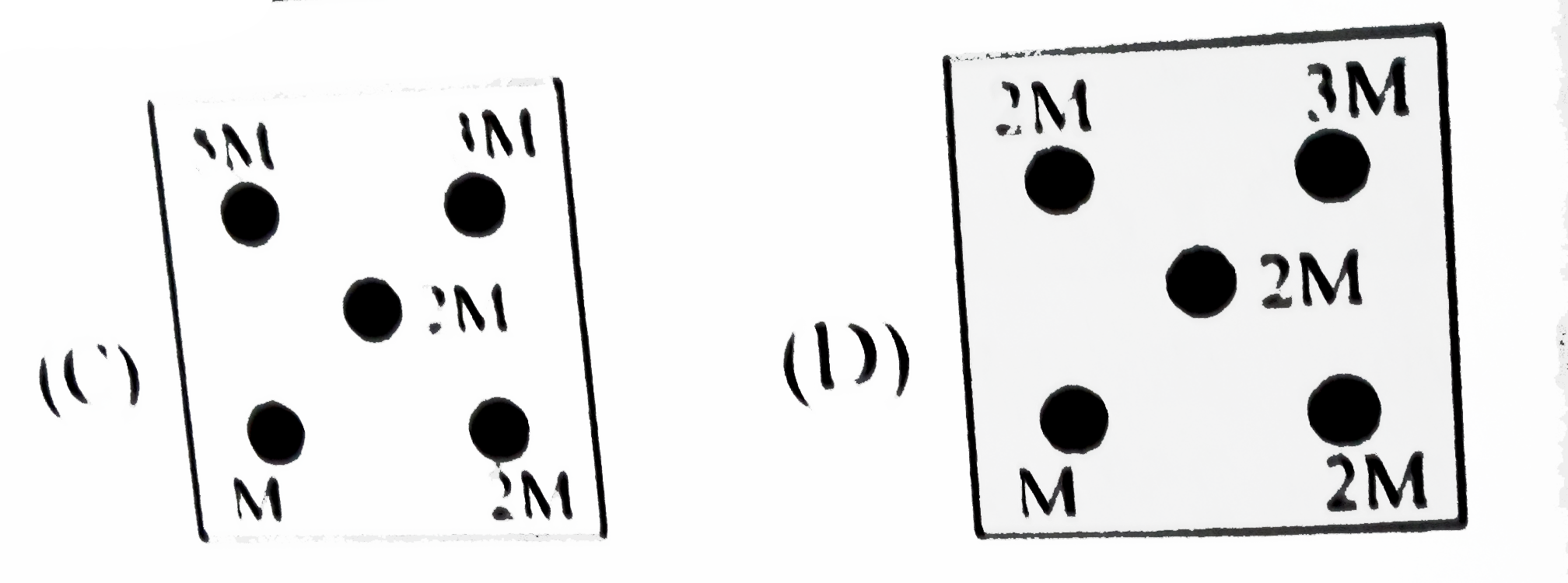
Rank the choice according to the magnitude of the gravitational force of the centre mass-AFA=FB<FC=FDBFA>FB<FD<FCCFA=FB>FC=FDDnone
Figure shows three arrangements of an electrons e and two protons p(where Dgtd)
(a) Rank the arrangement according to the magnitude of the net electrostatic force on the electron due to the protons placing the largest first.

(b) In situation (c), is the angle between the net force on the electrons and the line labeled horiontal less than or more than 45∘?
View SolutionA mass is at the center of a square, with four masses at the corners as shown.
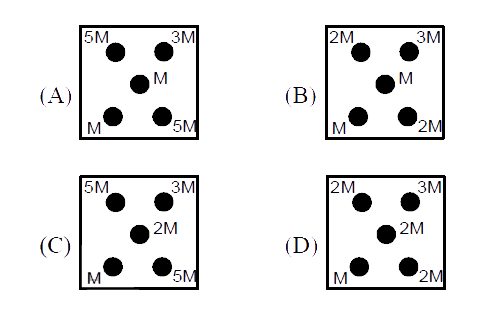
Rank the choices according to the magnitude of the gravitational force on the center mass.
View SolutionFigure show a four orientations at angle θ of its magnetic moment in a magnetic field B. Rank the orientation according to the magnitude of the torque on the dipole.

View SolutionThe figure here shows three equal currents i (two parallel and one antiparallel) and four Amperian loops. Rank the loops according to the magnitude of ∮ along each, greatest first.
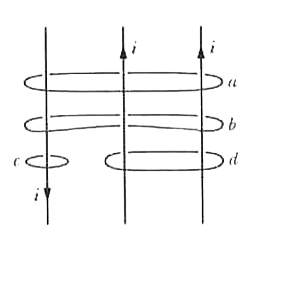
View SolutionThe figure shows a particle moving along x - axis subjected to three particles of acceleration (a). Rank the periods according to the increase they produce in the particle velocity, greatest first.
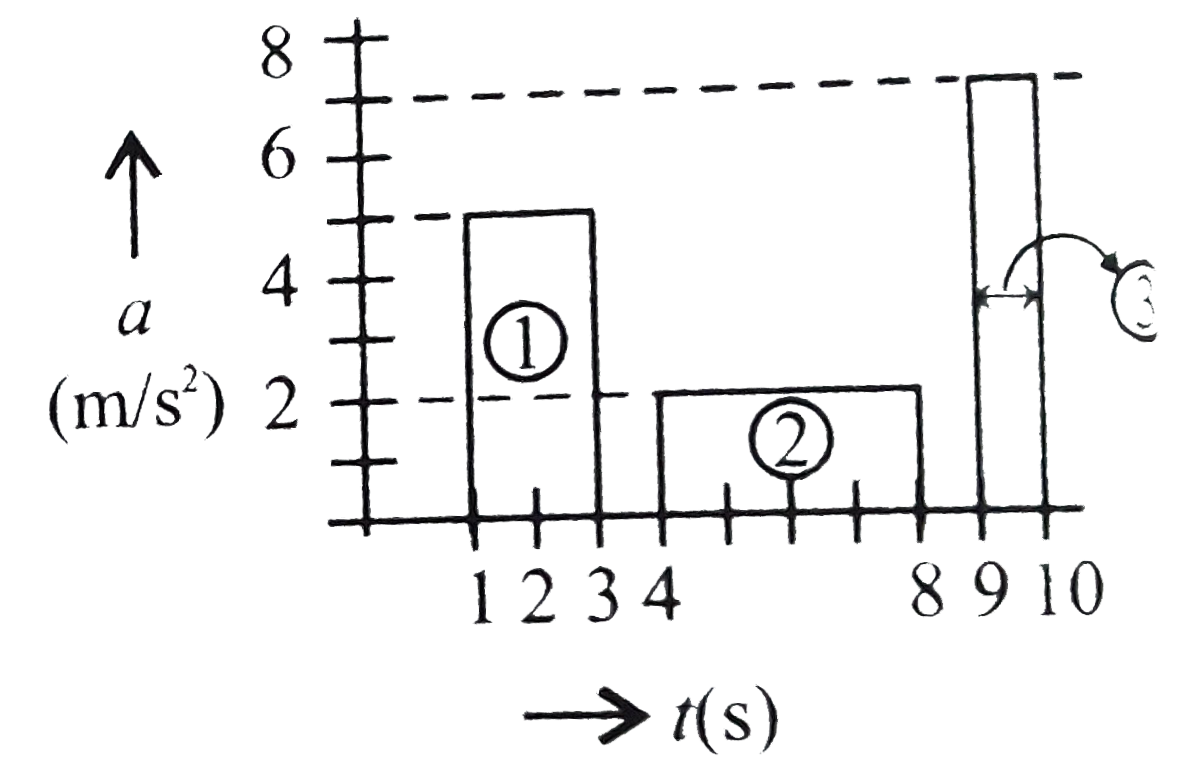
View Solution
